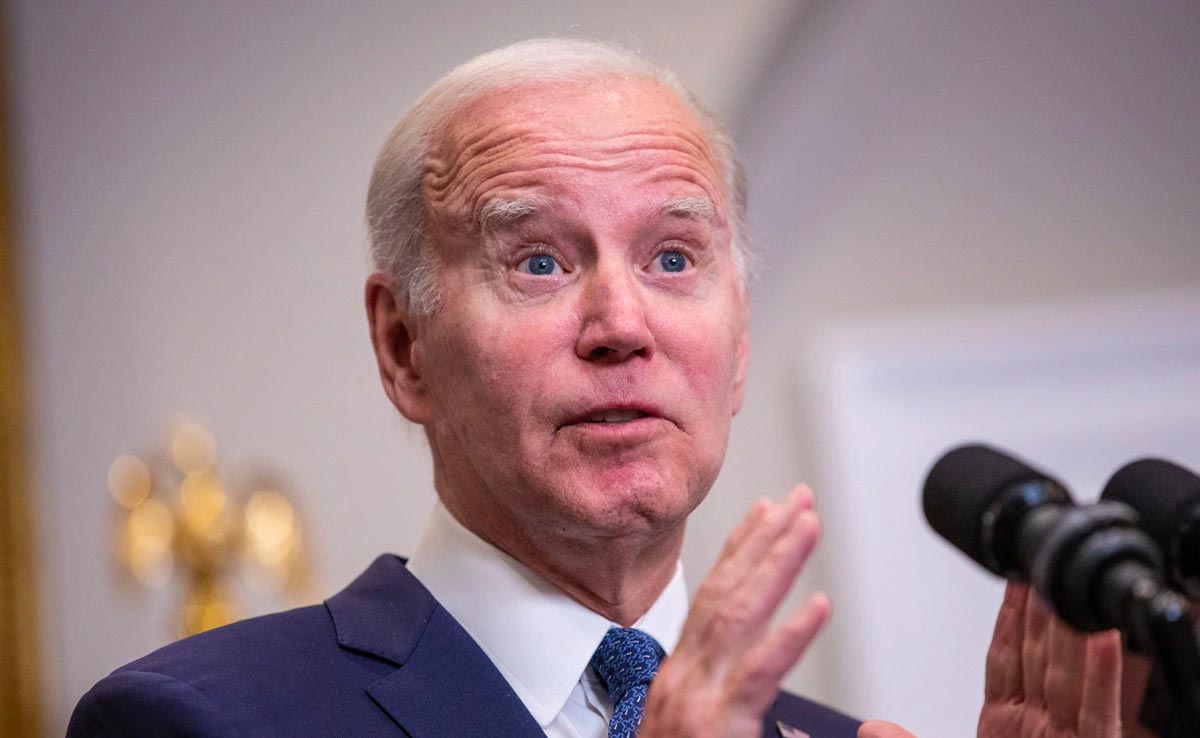
The strategy underscores Biden’s desire to respond strongly
The U.S. strikes against Iranian militia and proxy forces fulfill President Joe Biden’s pledge to retaliate for the deaths of three U.S. soldiers, but also leave room for both sides to avoid a high-risk confrontation.
The attacks were in line with a plan Biden had telegraphed for days: that he would inflict pain on Iran over a drone strike on a U.S. base in Jordan by one of its Iranian-backed militias in Iraq. He will demonstrate the full range of U.S. capabilities. He will also keep his options open.
The strategy underscores Biden’s desire for a forceful response that would make Iran and its proxies think twice about future attacks while also trying not to plunge the United States deeper into regional conflict.
“Our response begins today,” Biden said in a statement. “It will continue when and where we choose.”
Hidden behind the scenes is his desire to prevent a U.S.-Iran confrontation from undermining exploratory talks between Israel and Hamas. Israel’s devastating response to the group’s surprise attack on October 7, as well as U.S. support for the Israeli government, are among the reasons for repeated attacks by Iranian proxies.
“Perhaps we can turn the tide diplomatically in the Middle East by demonstrating our overwhelming military power,” said Evelyn Farkas, executive director of the McCain Institute who served in the Pentagon during the Obama administration. “Hopefully this will give We have the strength and determination to force the Israeli government to the negotiating table and send a signal to Hamas that now is the time to do the same.”
Aircraft from the United States, including long-range B-1 bombers, struck 85 targets in seven locations linked to the Islamic Revolutionary Guard Corps’ Quds Force and Iran-sponsored militant groups, according to U.S. officials. U.S. Central Command said the targets included command and control facilities and supply depots for rockets, missiles and drones.
It was the most serious attack on the Quds Force since 2020, when President Donald Trump ordered the assassination of General Qasem Soleimani in a drone strike outside Baghdad.
But Soleimani’s killing did not stop Iran, nor did the United States’ successive attacks on Iranian proxies in recent weeks. In addition to Iraq and Syria, the United States is engaged in tit-for-tat strikes with another Iranian proxy, the Houthis in Yemen, whose missile attacks on merchant ships in the Red Sea have disrupted global trade.
The biggest question with Friday night’s air raid is what’s next. A spokesman said in a phone interview with reporters that more news will be available in the coming days.
James Jeffrey, former President Donald Trump’s senior adviser on Syria, said: “The key question that I face, that we all should face, is if we do this and also send a signal to Iran, the next time the Americans When we suffer casualties, we will attack Iranian targets,” he told Bloomberg Television. “This is the only thing that can really stop Iran. Time will tell whether it is enough.”
Biden’s team realizes the stakes. Earlier this week, Secretary of State Antony Blinken said this was the most tumultuous period in the Middle East since at least 1973, when Egypt and Syria attacked Israel during the Yom Kippur War.
Hours before the attack, Blinken announced he would return to the region to push for progress in ceasefire and hostage agreement talks between Israel and Hamas. Success could reduce tensions and remove the incentive for Iranian proxies in Yemen and Lebanon, not to mention Hamas itself, to attack Israel and the United States.
Biden’s Republican critics argued the strikes were too late, given the four days that passed from when the American soldiers were killed, and some speculated they gave the Iranian officers a chance to escape.
“These pre-announced attacks may not be enough to stop Iran’s axis,” Sen. Deb Fischer, R-Neb., a member of the Armed Services Committee, said in a statement.
One thing that has yet to happen – and that Biden has no interest in – is any kind of direct contact or diplomacy with Iran. National Security Council spokesman John Kirby said in an interview with reporters that the United States has had no communication with Iran since the killing of three soldiers on January 28.
The Biden administration has been engaging in indirect talks with Iran to restore parts of the nuclear non-proliferation deal that Trump abandoned in 2018, and has made early progress, including the release of several imprisoned Americans.
Those conversations ceased after Hamas launched its attack on October 7, and there has been little substantive communication since. Meanwhile, Iran continues to enrich its uranium to 60% purity – although outside inspectors say progress is now slower.
“A dangerous cycle of escalation has taken hold,” said Susanna DiMaggio, senior fellow at the Carnegie Endowment for International Peace. “The idea that these tit-for-tat moves can be contained and prevented from escalating is a high-risk fantasy that is urgently needed. A diplomatic solution is needed.”
(Except for the headline, this story has not been edited by NDTV staff and is published from a syndicated feed.)
Follow us on Google news ,Twitter , and Join Whatsapp Group of thelocalreport.in












